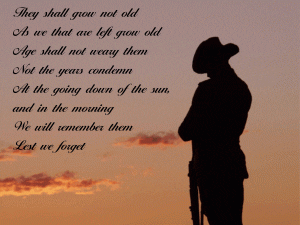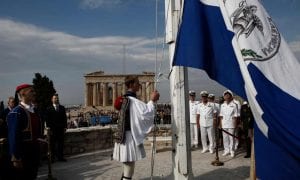Video: Unsung Female Heroes of World War 2
These women kicked some serious Nazi butt during World War 2; some come off victorious and others lost their lives but they all were incredibly brave.
These women kicked some serious Nazi butt during World War 2; some come off victorious and others lost their lives but they all were incredibly brave.
The Smithsonian has a super exhibit running from April 6, 2017 to February 3, 2019 about Modern Medicine and the Great War
This display explores the ways medicine was applied on the battlefield as well as highlighting important wartime advances in medical science. World War I provided a testing ground for the application of new medical technologies and procedures and, in some cases, accelerated their general acceptance or development in a much wider context. Simultaneously, wartime medical practice reflected the larger concerns and prejudices of early 20th century America as the country coped with the ever-changing complexities of modern industrial society.
About the Artifact Walls
Artifact walls, consisting of 275 linear feet of glass-fronted cases lining the central first and second floors, highlight the depth and breadth of the collections. They reflect the Museum’s core mission to collect, study, and exhibit objects from our nation’s rich and diverse history. This display is one of the special cases that highlight anniversaries, views into the collections, and research findings.
In April 1917 the United States entered a world war that had already claimed millions of lives and left millions more disabled by wounds or disease.
Health and fitness were central to building a strong military force, and sick and wounded soldiers required treatment to return them to the fight. The task ahead was enormous, but developments in science-based medicine—such as identifying microorganisms as the cause of diseases and developing sterile surgical procedures—gave medical practice increased prestige. Armed with new technologies and scientific methods, medical leaders were confident that health could be measured, disease prevented, and wounded bodies restored.
The war would put these ideas to the test on an unprecedented scale and under the most difficult conditions. Medical practices developed during the war changed the country’s approach to health care in ways that continue to affect us today.
 Today is Remembrance Day. The 11th Day of the 11th Month on the 11th hour the guns fell silent. The end of the WW1 carnage ended. Lest We Forget these young men and women who answered the call to serve.
Today is Remembrance Day. The 11th Day of the 11th Month on the 11th hour the guns fell silent. The end of the WW1 carnage ended. Lest We Forget these young men and women who answered the call to serve.
They shall grow not old, as we that are left grow old:
Age shall not weary them, nor the years condemn.
At the going down of the sun and in the morning,
We will remember them.
For the young men – a generation of them that never made it back and those that did were changed forever – who were shipped to another country to fight on foreign soil. Lest We Forget their sacrifice, their honour and duty.
Let We Forget the heroic nurses who volunteered to serve their country and their calling to tend to the wounded far from home. Their heroism and duty went above and beyond. In their own way they too were soldiers; fighting for the lives of their men. Unsung heroes.
Lest We Forget. We Remember those who served, sacrificed and endured. We don’t celebrate war. We celebrate their sacrifice, their honor.
Remember Them.
Lest We Forget.
 Greece reiterates claim of €288bn for damages under Nazi occupation
Greece reiterates claim of €288bn for damages under Nazi occupation
Athens says destruction played major part in delaying Greece’s development as modern state.
Greece says it will pursue its quest for second world war damages and repayment of a loan forcibly extracted during Nazi occupation with renewed zest, despite Germany openly rejecting the claims.
Less than two weeks after German president, Frank-Walter Steinmeier, used a state visit to apologise for atrocities committed by his forefathers, Athens vowed to relaunch the campaign while hailing the onset of a new era in bilateral ties.
“This is an issue that psychologically still rankles, and as a government we are absolutely determined to raise it,” said Costas Douzinas, who heads the Greek parliament’s defence and foreign relations committee.
“Obviously Greece couldn’t do that when it was in a [bailout] programme receiving loans from the EU and Berlin. It would have been totally contradictory.”
The leftist-led government is expected to press ahead with the claims after MPs debate what has been described as the first all-inclusive parliamentary inquiry into the damage wrought under Nazi occupation.
The report, compiled by a cross-party committee over several years, estimates that compensation of €288bn (£256bn) remains outstanding for the destruction Greece sustained between 1941 and 1944, the years the country was subject to Third Reich rule. It also calculates that a further €11bn is owed for a 476m Reichsmark loan Hitler’s forces seized from the Greek central bank in 1943.
Historians argue that by triggering an economic and currency collapse, the interest-free loan – which was used to finance the regime’s Africa campaign – played a central role in impoverishing large sectors of the population overnight.
“What we now have is a complete reading of the situation with a report that looks at the total damage inflicted on the country and its people during Nazi occupation,” said Douzinas, who is also a professor of law at London University. “In the past there were appraisals of the destruction wrought in individual incidents but never on this scale.”
Officials have scoured more than 400,000 pages of records obtained from US national archives chronicling the atrocities, and other records secured from Russia. Axis forces, as elsewhere in Europe, had been methodical in dispatching reports that listed massacres, the destruction of homes and shooting of victims.
Greeks put up heroic resistance to their German occupiers, but the price was heavy. Tens of thousands were killed in reprisals for a guerrilla campaign against the Wehrmacht, and at least 300,000 died of famine. About 40,000 people are thought to have starved to death in the first year of occupation alone, and Greece’s Jewish community was almost entirely wiped out.
“Germany has never properly assumed its historical responsibility for the wholesale destruction of the country,” said Stelios Koulouglou, who represents Greece’s governing Syriza party in the European parliament. “It was a catastrophe that was so complete it played a major part in delaying our country’s development as a modern European state.”
The spectre of the emotive issue being reopened surfaced as Athens marked the 74th anniversary of liberation from Nazi rule earlier this month.
The German government strenuously rejects charges that it owes anything to Greece, or Poland which also suffered greatly, for the wartime horrors. It says the chapter was closed in 1960 when it paid Athens 115m deutschmarks, roughly equivalent to £205m today.
Source: Greece reiterates claim of €288bn for damages under Nazi occupation
Terror in focus: the Jewish photographer who captured the rise of Nazism
Roman Vishniac is famous for his images of Berlin in the 1930s, as swastikas began to creep on to the streets. But did their sacred status overshadow the brilliance of his later work?
In 1920, Roman Vishniac and his new bride Luta arrived in Berlin. Having fled the turmoil of post-revolutionary Moscow, the couple had hastily been married by a station master in a Latvian border town, before traveling to Riga and on to the German capital. There, Vishniac was reunited with his wealthy parents, who had left Russia three years earlier, and he and Luta were married again in a register office before their union was blessed by a traditional Jewish ceremony. So began their new life in a city that an excited Vishniac described as “a living whole … the centre of western Europe”.
Roman Vishniac Rediscovered is at the Photographers’ Gallery and Jewish Museum, London, until 24 November.
Read Full Article here: https://www.theguardian.com/artanddesign/2018/oct/28/roman-vishniac-rediscovered-photographer-nazism
This is Zoe and her motorbike Mabel. Original Photography was by Derek Cutting from Firemate Photographics – when I saw his image of his war bike (LOVE that bike) and his model, it screamed Zoe at me. Well Lucia decided to recreate it for me and it’s AMAZING. Yes I have a desire to ride one of these gorgeous machines but driving a bike in Sydney is a suicide mission. I let Zoe ride instead – you can’t get killed riding a bike in a story…not unless the writer wants it to happen!

Subscribe to my newsletter (sent out twice a month) to find out the latest news, upcoming giveaways, free chapters of upcoming novels and my recommended reads from my favourite authors and their books!